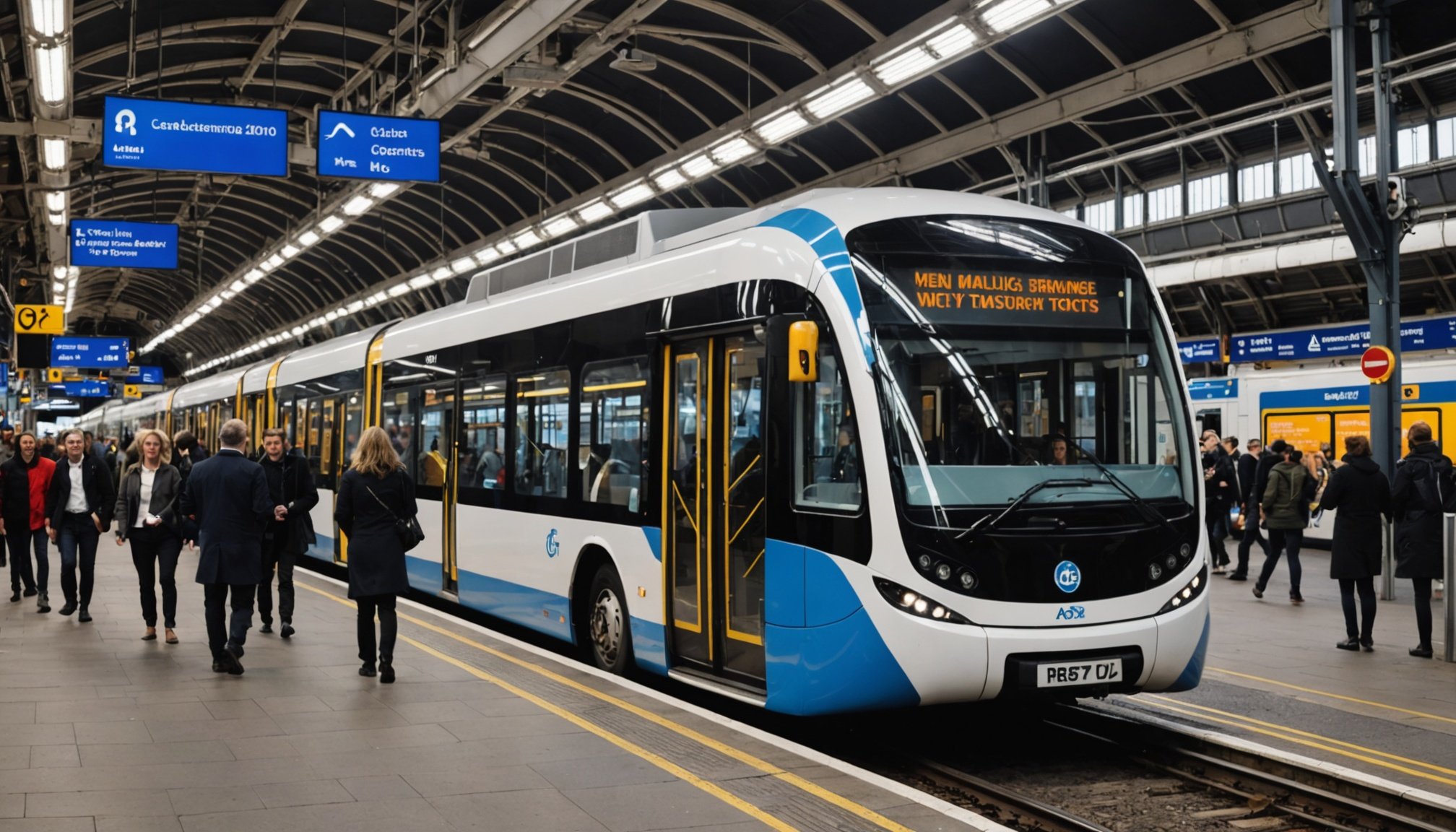AI Innovations in Public Transportation
Artificial intelligence is revolutionising UK public transport systems through the use of intelligent transit systems. AI is being implemented in various ways to enhance public transport efficiency and reduce costs.
For instance, predictive maintenance harnesses AI algorithms to monitor train conditions, allowing for timely repairs and minimising disruptions. Additionally, AI-driven traffic management systems help optimise bus routes by analysing traffic patterns in real time, improving punctuality and service reliability.
Topic to read : Revolutionizing telecom customer experience in the uk: harnessing the power of ai innovations
Efficiency gains are notable, with AI’s ability to manage resources effectively. By accurately forecasting demand, transport authorities can allocate resources, like staffing and vehicles, more efficiently, significantly cutting operational costs. Intelligent transit systems also play a crucial role in sustainable practices, such as optimising energy use within transport fleets, further reducing expenses and carbon emissions.
Case studies across the UK illustrate successful AI applications. For example, Transport for London employs AI to predict service disruptions, enhancing customer communications and reducing wait times. In the Midlands, AI-powered ticketing systems provide fare recommendations tailored to passengers’ travel habits, improving the overall commuting experience and achieving higher public transport efficiency.
Have you seen this : Revolutionizing uk agriculture: how ai is transforming precision farming for a sustainable future
These advancements underscore AI’s potential to streamline operations, improve services, and modernise transit systems across the nation.
Impact on Commuter Experience
Artificial intelligence is rapidly improving commuter satisfaction by delivering personalized travel experiences through smart travel solutions. AI-powered systems offer tailored travel recommendations based on commuters’ preferences and patterns, customising each journey. For example, AI applications use real-time data to suggest alternative routes or modes of transport during disruptions. This provides flexible solutions, enhancing convenience and reliability for travellers.
Moreover, real-time data utilization aids in improving service reliability and customer communication. Bus and train services employ AI to inform passengers about schedules, delays, and updates, allowing them to adjust their plans proactively. This transparency in communication has led to more positive commuter feedback.
Additionally, monitoring satisfaction metrics post-AI implementation offers valuable insights. Studies indicate an increase in commuter satisfaction, as timely and accurate information uplifts the overall travel experience. By integrating feedback loops, public transport providers can continuously adapt and refine AI systems, thereby boosting efficiency and user-friendliness.
In conclusion, AI is essential in transforming UK public transport by meeting commuter needs through intelligent solutions, enhancing overall travel experience, and achieving greater public transport efficiency.
Challenges of Implementing AI in Public Transport
Introducing AI in public transport presents distinct challenges that impede widespread AI adoption. One significant barrier is the infrastructure challenges required for AI integration. Many transit systems need substantial upgrades to accommodate advanced AI technologies. This includes modernising outdated systems and deploying robust digital networks to ensure smooth AI operation.
Another primary concern involves data privacy concerns. Implementing AI in public transport necessitates vast amounts of data collection to operate efficiently. This raises pressing issues about how securely this data is managed and who has access to it. Complying with strict data protection regulations is crucial for maintaining public trust.
Resource requirements also play a pivotal role. Successful AI adoption demands significant financial investments and skilled personnel to manage and maintain these systems. Allocating sufficient funds for continuous improvement and training is necessary to overcome technical hurdles and ensure efficient AI integration.
To address these barriers effectively, stakeholder collaboration is essential. By fostering partnerships between government agencies, tech companies, and transport operators, innovative strategies and solutions can be developed. This collaborative approach facilitates a smoother transition toward efficient and secure AI implementations within public transportation.
AI Transformations in the Tourism Sector
The integration of AI in tourism is dramatically enhancing visitor experiences throughout the UK. Tourism operators are employing sophisticated intelligent travel experiences that personalise visitor engagements. By harnessing AI-driven tools, operators can curate bespoke itineraries, which are tailored to individual preferences. These tools analyse visitor data to suggest attractions, dining options, and travel routes suited to personal tastes.
In terms of customer engagement, AI applications are revolutionising how tourists interact with services. For instance, chatbots provide instant customer support, answering queries about local attractions or real-time weather updates. The AI’s capacity to process vast amounts of information promptly ensures that visitors enjoy seamless travel experiences, with easy access to information.
Moreover, the potential impacts of AI stretch into tourism marketing. By leveraging data analytics, AI can identify emerging trends and preferences, allowing marketing campaigns to be targeted more effectively and enhancing service personalisation. This data-driven approach not only improves customer satisfaction but also boosts return visits.
As AI continues to evolve, its role in transforming tourism is expanding, promising innovative, smart, and personalised travel opportunities for visitors across the UK.
The Future of AI in UK Transportation and Tourism
In the coming decade, the future of AI in the UK’s transportation and tourism sectors promises to bring transformative changes. One emerging trend is the proliferation of autonomous vehicles, which are set to revolutionise how people travel by offering safer, more efficient journeys. These self-driving cars and buses are not just a futuristic fantasy but an imminent reality, with ongoing pilot projects in various cities.
Smart infrastructure is another pivotal development. Future-ready cities are increasingly focusing on integrating AI into urban planning, optimising traffic flow, and enhancing sustainability. This technology plays a critical role in preserving resources while lowering emissions, leading to greener urban environments.
Regarding tourism, AI-driven personalisation and predictive analytics are reshaping industry practices. The trend towards hyper-personalised travel experiences allows tourists to receive recommendations tailored precisely to their preferences in real-time. This enhances customer satisfaction and boosts economic growth through increased spending.
As AI continues to evolve, its potential benefits for UK commuters and tourists are substantial, from smoother, quicker journeys to enhanced visitor experiences. Public and private sectors alike must remain adaptive to leverage these emerging advantages effectively, unlocking a smarter, interconnected travel future.











